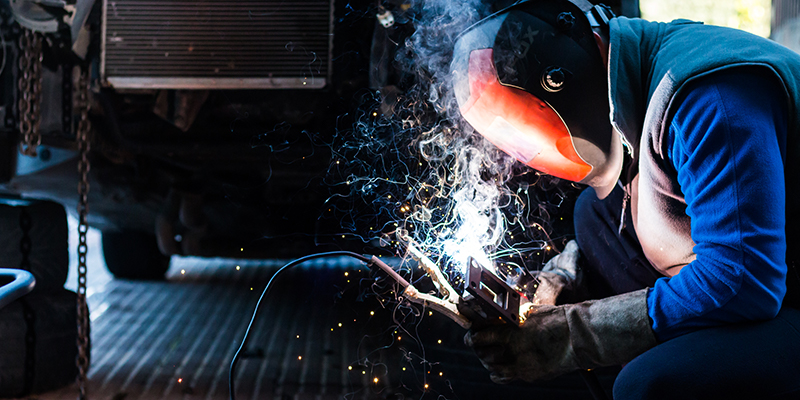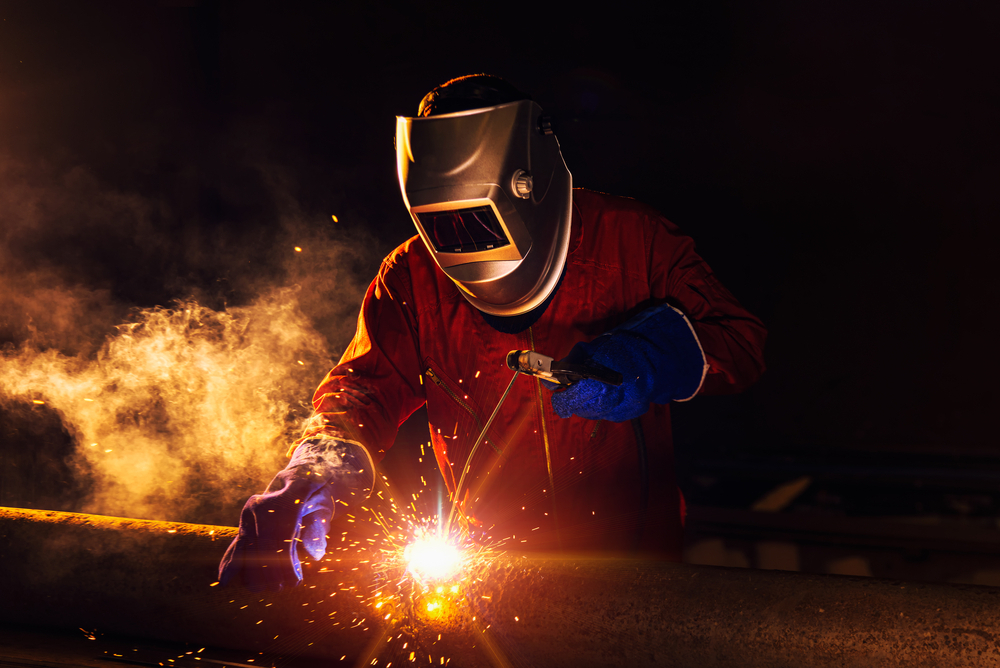Usual Welding Repair Service Issues and Just How to Address Them Efficiently
Welding fixings usually encounter a variety of problems that can threaten the integrity of the end product. Usual problems consist of poor infiltration, porosity, and misalignment, amongst others. Each flaw offers one-of-a-kind obstacles that require particular strategies for resolution. Recognizing these issues is important for welders aiming to enhance their end results and skills. This discussion will certainly explore these common welding repair work concerns and reliable methods to address them.
Inadequate Penetration
Insufficient infiltration occurs when the weld metal fails to fully fuse with the base product, leading to weak joints and potential architectural failures. This issue usually originates from insufficient warm input, incorrect electrode angle, or inappropriate welding rate. Welders may experience insufficient penetration due to a miscalculation of the necessary specifications for a certain product thickness or kind. Furthermore, contamination on the base product's surface can hinder reliable bonding, intensifying the problem. To attend to poor infiltration, welders ought to ensure appropriate setups on their equipment and keep a tidy job surface area. Normal assessment of welds is advised to recognize any kind of shortages early, allowing for prompt corrections and the prevention of jeopardized architectural honesty in welded settings up.
Porosity
Porosity is a common problem in bonded joints that manifests as tiny gas bubbles entraped within the weld steel. This issue can endanger the stability of the weld, resulting in reduced strength and possible failure under stress and anxiety. Fabrication. Porosity commonly emerges from contamination, moisture, or incorrect welding strategies, which permit gases to run away right into the liquified weld swimming pool. To attend to porosity, welders need to assure appropriate surface area prep work, keep a clean workplace, and utilize suitable welding criteria. Additionally, selecting the appropriate filler product and protecting gas can mitigate gas entrapment. Regular examination and screening of welds can help recognize porosity early, ensuring timely corrective activities are taken, therefore preserving the quality and reliability of the welded framework
Misalignment
Misalignment in welding can occur from numerous aspects, including inappropriate arrangement and thermal development. Comprehending the origin is essential for effective resolution. A number of modification methods are offered to realign elements and guarantee structural stability.
Sources of Misalignment
Welding imbalance often stems from a variety of underlying concerns that can endanger structural honesty. One key reason is incorrect fit-up of parts before welding, which can lead to voids and uneven surfaces. Variations in thermal development during the welding process can likewise lead to distortion, especially if the products being signed up with have various coefficients of expansion. Furthermore, poor fixturing and securing may fail to hold parts firmly in place, resulting in activity throughout welding. Improperly conserved tools, including welding equipments and devices, may introduce variances in the weld bead, further adding to misalignment. Ultimately, driver error, coming from insufficient training or experience, can likewise play a considerable role in creating misaligned welds.
Improvement Techniques Available
Dealing with misalignment successfully calls for a mix of rehabilitative strategies tailored to the certain problems available. One typical approach is using jigs or components to hold components in the appropriate position throughout welding, ensuring consistent positioning. Furthermore, preheating the products can help in reducing distortion and boost fit-up. For significant misalignment, mechanical realignment methods, such as making use of hydraulic jacks or clamps, can be utilized to remedy the placement before welding. Post-weld heat treatment may also be essential to relieve tensions triggered by imbalance. Lastly, cautious evaluation and adjustment throughout the arrangement phase can stop imbalance concerns from ending up being substantial issues, advertising a smoother welding procedure and improving overall architectural honesty.
Distortion
Distortion is a common challenge in welding that can occur from various variables, consisting of irregular heating & cooling. Understanding the causes of distortion is necessary for carrying out reliable avoidance strategies. Resolving this problem not only improves structural honesty yet likewise improves the overall quality of the weld.
Reasons for Distortion
When based on the extreme warm of welding, materials typically undertake adjustments that can cause distortion. This phenomenon mostly occurs from thermal expansion and contraction throughout the welding procedure. As the weld location heats up, the material broadens; upon cooling, it contracts, which can develop inner stress and anxieties. Furthermore, irregular heating across a work surface can exacerbate these stress and anxieties, leading to warping or flexing. The sort of material additionally plays a substantial function; steels with differing thermal conductivity and coefficients of development may respond in different ways, causing unpredictable distortions. Poor joint style and insufficient fixturing can add to imbalance during welding, raising the possibility of distortion. Comprehending these causes is necessary for reliable welding repair service and prevention techniques.
Avoidance Techniques
Effective prevention methods for distortion throughout welding concentrate on managing heat input and making certain correct joint design. Preserving a constant warm input assists to decrease thermal growth and tightening, which can lead to distortion. Using methods such as preheating the workpiece can likewise reduce the temperature level gradient, promoting consistent home heating. Additionally, picking suitable joint designs, such as T-joints or lap joints, can boost stability and decrease tension focus. Carrying out proper fixturing to secure the work surfaces in place additionally help in keeping alignment during the welding procedure. Staggered welding series can disperse warmth more uniformly, preventing localized distortion. By using these methods, welders can substantially reduce the chance of distortion and enhance the general top quality of their welds.
Cracking
Splitting is a typical issue experienced in welding fixings, commonly arising from different factors such as improper cooling rates, product choice, or inadequate joint preparation. The occurrence of splits can significantly compromise the honesty of the weld, leading to possible failings throughout operation. To resolve this concern, welders have to initially evaluate the root creates, ensuring that products are compatible and suitably selected for the specific application. In addition, managing the air conditioning rate throughout the welding procedure is necessary; quick air conditioning can cause stress and bring about splitting. Correct joint style and preparation additionally add to lessening the risk. Implementing these strategies can improve weld quality and durability, eventually reducing the probability of cracking in ended up weldments.

Insufficient Blend
A substantial concern in welding repairs is incomplete fusion, which happens when the weld steel does not adequately Click Here bond with the base material or previous weld passes - Montana Mobile Welding and Repair. This flaw can lead to weak points in the joint, potentially jeopardizing the integrity of the bonded framework. Aspects adding to insufficient combination include not enough heat input, inappropriate welding method, and contamination of the surface areas being joined. To address this issue properly, welders need to ensure appropriate pre-weld cleansing and surface area preparation, as well as adjust their welding criteria to accomplish adequate infiltration and fusion. Normal evaluation during the welding procedure can additionally help determine insufficient combination early, permitting timely rehabilitative steps to boost the total quality of the weld
Overheating
While welding repairs can boost structural honesty, overheating provides a significant difficulty that can bring about product deterioration. Extreme warmth throughout welding can change the mechanical buildings of metals, resulting in minimized stamina, raised brittleness, and warping. This sensation is specifically essential in high-stress applications where architectural reliability is extremely important. Recognizing getting too hot can entail visual evaluations for discoloration or distortion, along with monitoring temperature throughout the welding process. To reduce the threats connected with getting too hot, welders must use suitable methods, such as controlling heat input, readjusting travel rate, and making use of ideal filler materials. Furthermore, executing pre- and post-weld warmth treatments can help recover material buildings and improve the overall high quality of the repair service, guaranteeing long-lasting efficiency and security.
Regularly Asked Inquiries
What Are the Usual Indicators of a Welding Flaw?

Just How Can I Examine My Welds for High quality?
To evaluate welds for high quality, one can use visual examinations, ultrasonic screening, and radiographic methods. Each method assures architectural stability, identifies defects, and validates adherence to specified criteria, eventually improving the reliability of the bonded joints.
What Security Precautions Should I Take While Welding?
When welding, one should focus on safety by using suitable personal safety devices, making sure correct air flow, securing combustible products away, maintaining a tidy work space, and understanding environments to stop mishaps and injuries.
Can I Repair a Weld Without Remodeling the Entire Joint?
Fixing a weld without redoing the entire joint is feasible, depending on the damages (Montana Mobile Welding and Repair Fabrication). Methods such as grinding, including filler product, or utilizing a welding procedure can properly deal with specific problems while protecting the bordering framework
What Equipment Are Vital for Effective Welding Fixes?
Vital devices for reliable welding fixings include a welding maker, cable brush, mill, safety equipment, clamps, and filler products. Each device plays a vital duty in guaranteeing quality and safety and security during the repair work procedure. Porosity typically emerges from contamination, wetness, or improper welding techniques, which permit gases to leave right into the liquified weld pool. Badly conserved tools, including welding devices and devices, may present disparities in the weld bead, additional adding to misalignment. When subjected to the intense warmth of welding, products frequently undertake changes that can lead to distortion. Splitting is a common problem encountered in welding repair fiber welding work, frequently resulting from numerous factors such as inappropriate cooling prices, material selection, or inadequate joint preparation. A substantial problem in welding repairs is insufficient combination, which takes place when the weld metal does not effectively flux core bond with the base material or previous weld passes.